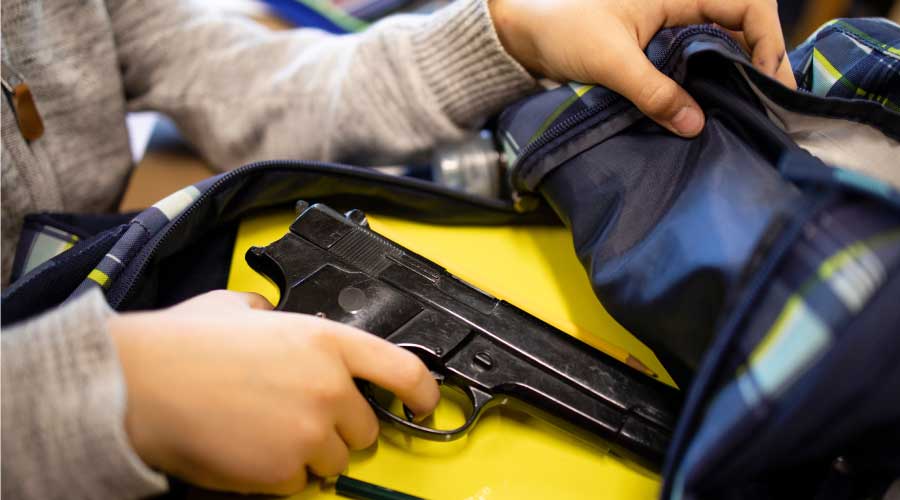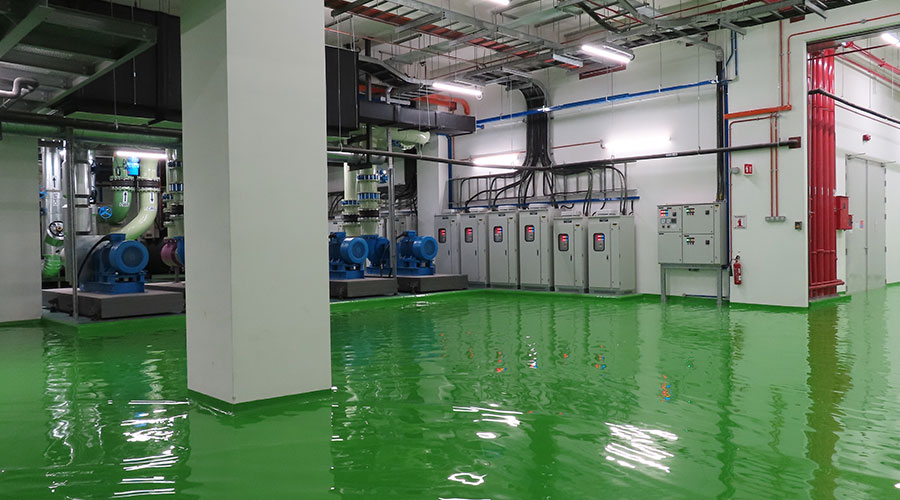IBC, New York Mandate Photoluminescent Markings
Photoluminescent products — for pathway marking and emergency signage — are gaining popularity
with building owners and code bodies
Since the 2009 edition of the IBC will require the installation of photoluminescent pathway marking in new high-rise buildings, it’s worth looking back on the experiences of facility executives in New York City, where Local Law 26 required photoluminescent pathway marking in all high-rise office building stairwells by July 2006.
At the time Local Law 26 was passed, there were several standards available relating to the design and approval of pathway marking. However, the New York City Department of Buildings decided to develop its own reference standard (RS 6-1 pdf). It also decided that only photoluminescent materials would be acceptable. To develop the standard, the Department of Buildings studied photoluminescent pathway marking extensively, but the decision to develop a standard reduced the time available to facility executives to choose and install approved products before the deadline. Some facility executives installed pathway marking prior to the release of RS 6-1, after being given assurances by installers that their system would be compliant. This did not always prove to be true. Some buildings required modifications to be brought into compliance.
The New York City Department of Buildings requires testing at a lab recognized by the department. The testing process was lengthy and most approvals were not issued until late 2005. This left less than a year for facility executives to choose and install a system. Many of the 1,800 buildings affected were not in compliance on July 1, 2006, and systems were reportedly still being installed in 2007.
One obstacle to compliance was a general lack of knowledge about photoluminescent pathway marking, even among installers. Few installers had experience with pathway marking prior to the requirement being passed. While the New York Department of Buildings went to great lengths to educate the public, alternative sources of information were mainly limited to a small number of manufacturers. Most distributors and installers entered the market only after Local Law 26 passed. Therefore, when a facility executive turned to an installer for guidance, the result was often less than satisfactory. The photoluminescent industry has developed several associations, such as the Photoluminescent Safety Association (www.plsafety.org) to improve understanding of its products. Still, it remains to be seen whether the experience of facility executives affected by the 2009 IBC requirement will differ from those of building owners in New York City.
Lighting Conditions in Stairs
Another challenge to compliance was the existing lighting in stairwells. As mentioned previously, the charging of photoluminescent pathway marking depends on the type of ambient light available, the intensity of that light incident on the material and the duration of the light.
The New York City building code requires a minimum light level of 2 footcandles of illumination in stairwells. This requirement pre-dated any consideration for requiring pathway marking. As installers began surveying buildings, they found that stairwells in many buildings did not meet the minimum illumination requirement of 2 footcandles. RS 6-1 specified testing of photoluminescent products at 2 footcandles as it was presumed that the stairwells would have at least this level of illumination. The New York Department of Buildings began to receive inquiries from facility executives and installers as to what should be done about ambient light levels less than 2 footcandles. The Department’s response was that the lighting should at least meet the minimum mandated by the building code. Otherwise, the photoluminescent pathway marking might not be adequately visible at the end of the 90-minute emergency period specified by Local Law 26.
Another issue that arose was that some buildings were equipped with energy-saving motion detectors that powered up the lights only if someone entered the stairwell. Because photoluminescent pathway marking depends on ambient light to charge it, this use of motion detectors was prohibited.
Surface Conditions
Unfavorable surface conditions presented another challenge. Photoluminescent pathway marking is mounted on the floors, walls, doors and door frames in the stairwells. The pathway marking components are either mechanically fastened or attached with an adhesive. While mechanically fastened components are relatively unaffected by the condition of the mounting surfaces, the opposite is true of some adhesive-backed components. They require a surface relatively free of dirt and grease. In many buildings in New York City, the stairs had to be thoroughly cleaned or even painted to provide an acceptable surface for mounting the components. Where proper surface preparation was not provided, adhesive-backed components often came away from the surface in the weeks following their installation, requiring reinstallation on properly prepared surfaces.
Facility executives who had one- or two-year warranties were protected if adhesive-backed materials failed during the warranty period. Some facility executives decided to have failing pathway marking ripped out and replaced with mechanically fastened products or products installed with a more robust adhesive.
Photoluminescent pathway marking technology has proven itself to be reliable. The use of these products continues to grow, and the IBC requirement and pending proposals will only accelerate that growth. The difficulties in New York City provide lessons that can help facility executives in other cities ensure a smooth installation process. The problems were not caused by poor products or applications. Rather, the problems were due to a lack of understanding of the code, the limitations of adhesive-backed products and the conditions in the buildings. In buildings where facility executives educated themselves, obtained the services of a firm that knew the products and properly prepared installation surfaces, few problems were encountered.
James D. Amy, Jr., PE, is a senior consultant for Rolf Jensen & Associates, Inc. He has more than 15 years of experience dealing with photoluminescent pathway marking systems.
Related Topics:













